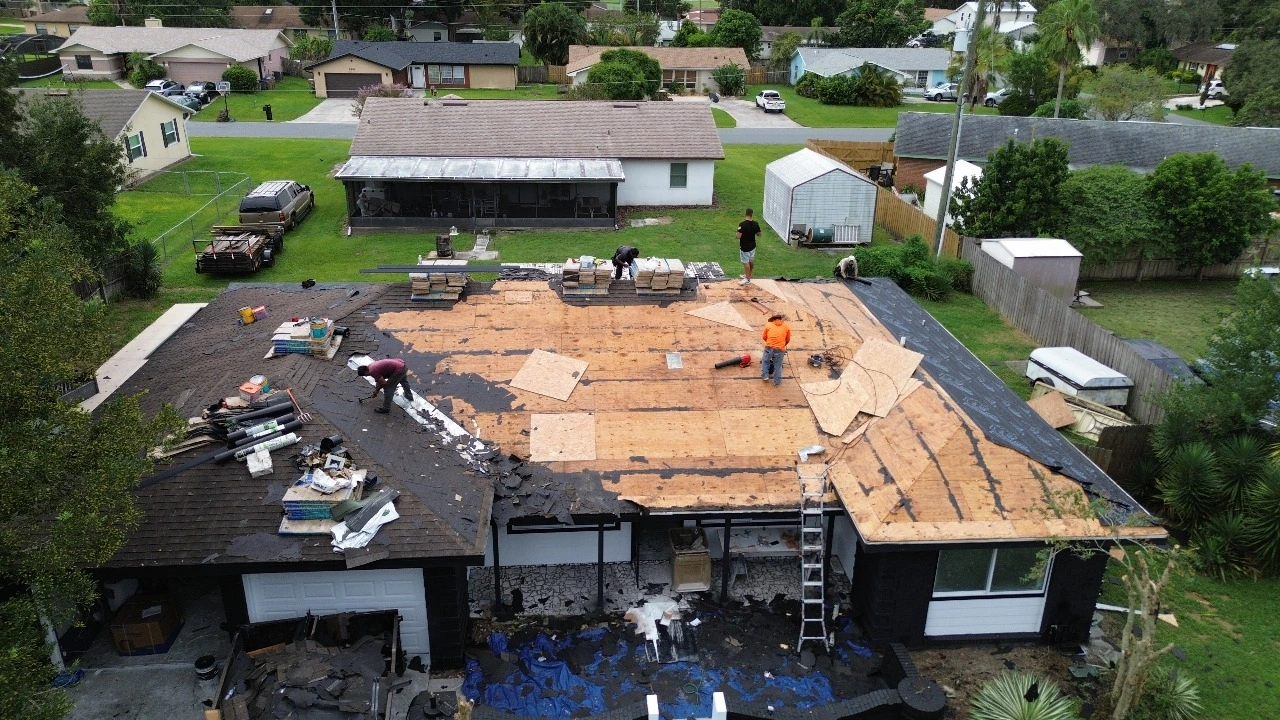Local Roofing Regulations & Permits
When you invest in a new roof or major repairs, understanding warranties and insurance coverage can save you thousands of dollars and significant headaches down the road. Yet many Florida homeowners don’t fully understand what’s covered, what’s not, and how to properly file claims when damage occurs.
At Roof Roof, with over 20 years of experience in the construction industry, we’ve helped countless homeowners navigate the complex world of roof warranties and insurance claims. This comprehensive guide will help you understand your coverage, protect your investment, and know exactly what to do when problems arise.

Table of Contents
Types of Roof Warranties: Understanding Your Coverage
Manufacturer's Material Warranty
What's Usually Covered:
- Manufacturing defects in shingles or tiles
- Premature deterioration of materials
- Color fading beyond normal limits
- Material failure due to production issues
What's NOT Covered:
- Improper installation
- Damage from storms, hail, or debris
- Normal wear and tear
- Algae or moss growth
- Damage from poor ventilation or maintenance
Workmanship Warranty (Contractor's Warranty)
This warranty covers the quality of installation and labor. At Roof Roof, we stand behind our work because we know that proper installation is just as important as quality materials.
Typical Coverage Period: 1 to 10 years, depending on the contractor
What's Covered:
- Installation errors or defects
- Leaks due to improper flashing installation
- Fastener issues or improper sealing
- Problems with ventilation installation
- Structural issues related to installation
What's NOT Covered:
- Damage from extreme weather events
- Material defects (covered by manufacturer)
- Damage from homeowner modifications
- Normal aging and wear
Pro Tip: Always get your workmanship warranty in writing, with clear terms about what’s covered and for how long. Verbal promises mean nothing if issues arise years later.
Enhanced or Extended Warranties
- Extended coverage periods
- Non-prorated benefits
- Coverage for both materials and labor
- Transferability to new homeowners
Understanding Your Homeowner's Insurance Coverage
Your insurance policy is separate from warranties and covers different types of damage. Florida homeowners face unique insurance challenges due to hurricane risks and rising premiums.
What's Typically Covered
Wind and Hail Damage: Florida policies usually cover damage from hurricanes, tropical storms, and severe weather. However, many policies have separate deductibles for hurricane damage.
Fire Damage: Roof damage from fire or lightning strikes is generally covered.
Falling Objects: Damage from trees, branches, or debris is usually covered.
Vandalism: Intentional damage to your roof is typically included.
What’s Usually NOT Covered
Normal Wear and Tear: Insurance doesn’t cover roofs that fail due to age or lack of maintenance.
Neglect: If you ignored obvious problems and damage worsened, claims may be denied.
Cosmetic Damage: Minor aesthetic issues that don’t affect function aren’t covered.
Flood Damage: Standard homeowner’s policies don’t cover flood damage—you need separate flood insurance.
Poor Installation: If your roof was improperly installed, insurance typically won’t cover resulting damage.
When to File an Insurance Claim vs. Use Your Warranty
Knowing which coverage to use can save you money and preserve your insurance rates.
Use Your Warranty For:
- Manufacturing defects discovered shortly after installation
- Installation problems like improper flashing or leaking seams
- Premature shingle deterioration unrelated to weather
- Issues covered by contractor work

